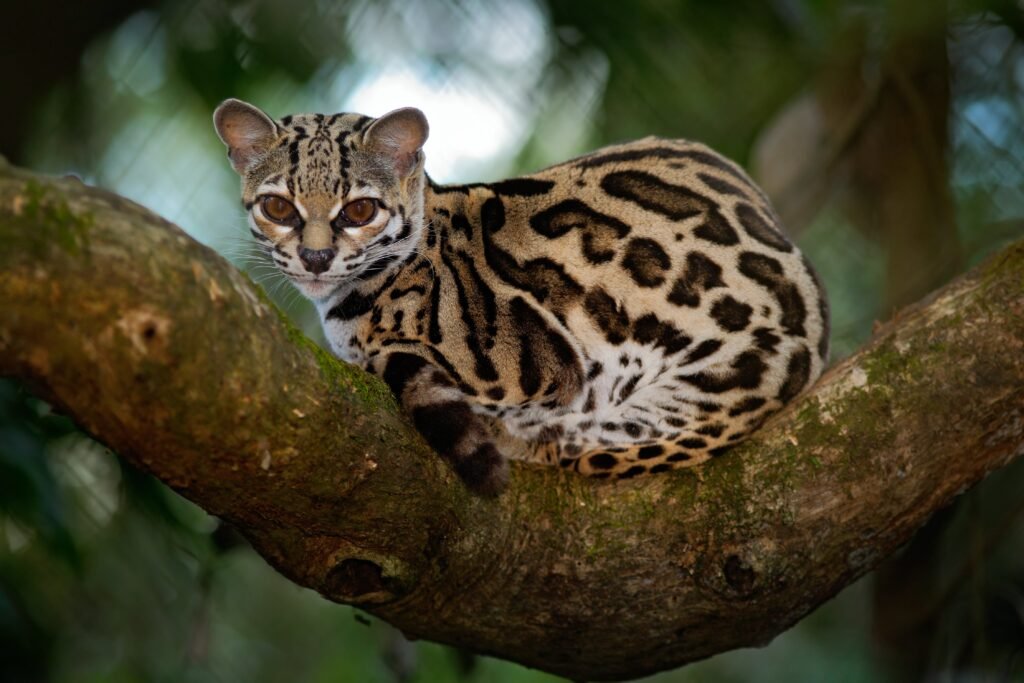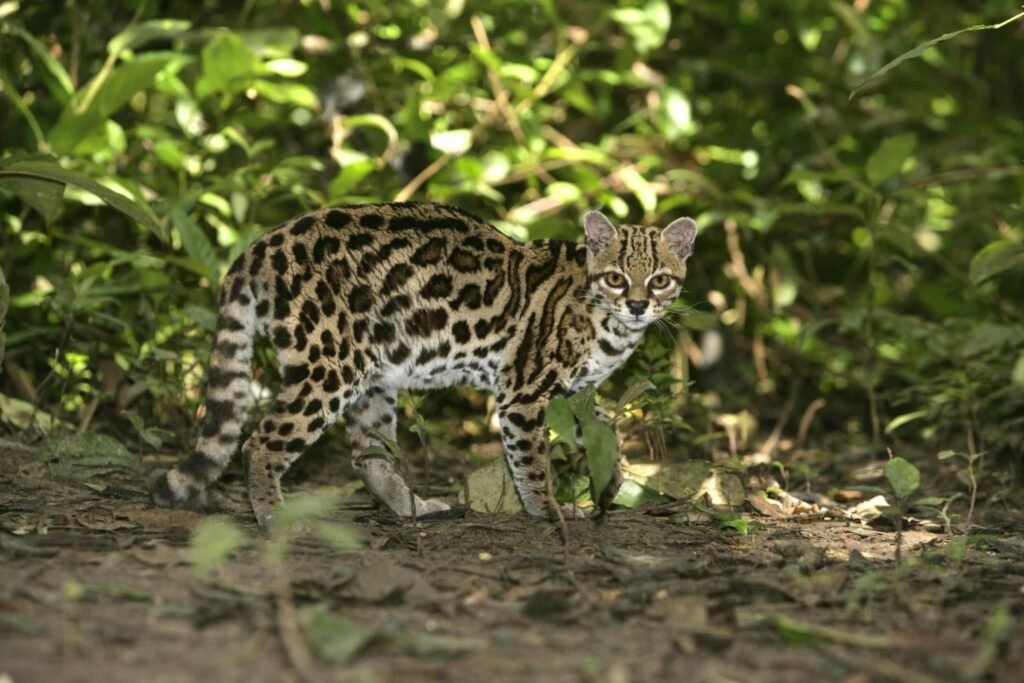
The margay, Leopardus wiedii, is a small, arboreal wild cat native to the dense forests of Central and South America. Often mistaken for a smaller ocelot, the margay has a more slender build, larger eyes, and a proportionately longer tail, which can be as long as its body and head combined. Its coat is beautifully marked with dark rosettes and spots on a tawny background, providing excellent camouflage in its arboreal habitat. What truly sets the margay apart is its extraordinary climbing ability; it’s one of only two cat species (the other being the clouded leopard) capable of rotating its ankles 180 degrees, allowing it to climb down trees head-first and even hang from branches by one paw. This nocturnal and solitary hunter primarily preys on arboreal mammals like monkeys and squirrels, as well as birds and insects.

Margays play a crucial role in maintaining the health and biodiversity of the forest ecosystems they inhabit. As a specialized arboreal predator, they help to regulate the populations of tree-dwelling mammals and birds, preventing overpopulation that could lead to imbalances in the forest canopy. Their presence is a strong indicator of a healthy and intact forest, as they require continuous forest cover to thrive. By contributing to the natural selection processes within their prey species, margays help ensure the overall fitness of the forest community. Therefore, the conservation of margays is intrinsically linked to the protection of the vanishing rainforests they call home, safeguarding countless other species that rely on these vital habitats.
Every day, wild cats around the world face threats like habitat loss, poaching, and natural climate progression. But hope isn’t lost. With your support, we can protect these majestic animals and preserve their habitats.
Join our growing community of wildlife champions and help create a safer future for all 40 wild cat species.
Zoo-EV is a nonprofit organization dedicated to the protection and preservation of the world’s 40 wild cat species through education, community engagement, and conservation initiatives. Zoo-EV is recognized as a 501(c)(3) tax-exempt organization by the IRS, with the Employer Identification Number (EIN) 88-3636567.